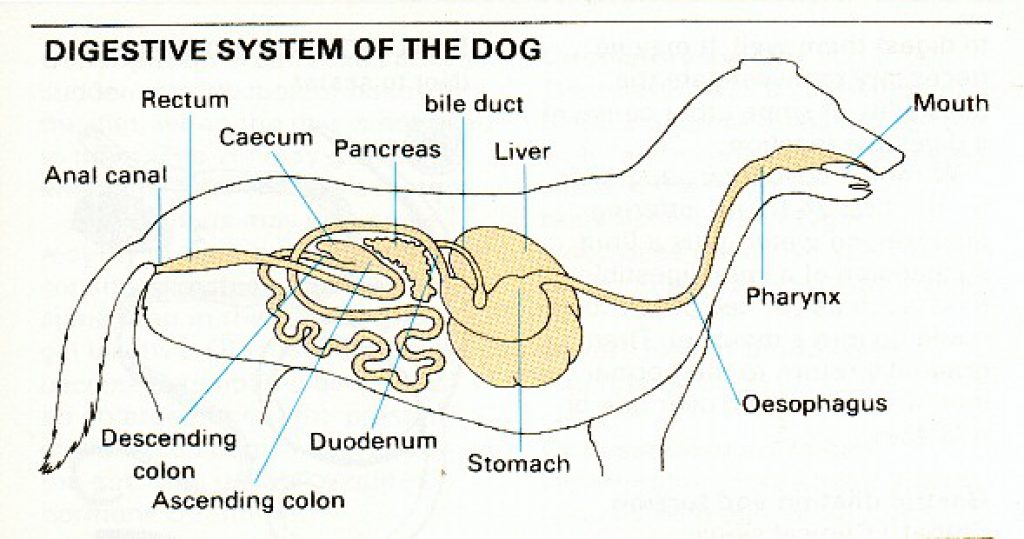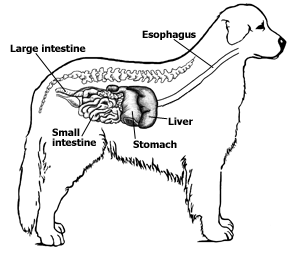Today when I was feeding my dog, a question pops up to mind that How Long does it Take for a Dog to Digest Food?
A dog needs 4 to 5 hours to digest his food and ready to take the next meal, but it can take up to 12 hours to poop the same food. It broadly depends on the Quality of food, like a hard kibble takes 8 to 10 hours to digest while the soft and wet dog food takes only 4 to 5 hours.
The digestion process starts right from the mouth, but a poor-quality food with hard-to-digest ingredients will take more time to break up. A premium quality food with a more percentage of protein digest quickly and pass through all the stages easily.
Most vet and studies agree that hard kibble takes double time compared to soft, homemade, or wet dog food to digest. The reason is the food breakdown process in the internal organs takes more time in hard kibble.
Dog’s metabolism work in a similar way as human but have some specific needs and different composition. Dogs need to eat nutritious food to stay active and healthy. The components of the dog’s diet are called nutrients after eating nutrients digested and processed by the body to fulfill needs.
You might also like our recent blog posts on the can dogs eat scallops? and can dogs eat salami? Available on a separate page.
What is digestion

The food that dogs eat breaks down into a simple form, into the smallest possible form that the body can absorb and process called digestion. In the animals like dogs, this is a straightforward and simple process to understand; the digestion process takes place in the alimentary or digestive tract, whom we call the gut.
It is a hollow tube that the food passes through, and during this pass-through process, many acids and enzymes from the different organs discharge into this tube and mix up with the food.
These enzymes, which are called digestive enzymes, speed up the process of hydrolysis; it is a process in which food is broken down to the minimum possible size. Moving forward, it is necessary to look into all the aspects to get the answer to How long does it take for a dog to digest food? so let’s dig more.
Protein, fat, and carbohydrates are the primary nutrient need to be digested on priority. Other nutrients include vitamins and minerals digested as they are found, but in most cases, they may be released from primary nutrients before they are absorbed.
How Long does it Take for a Dog to Digest Food and Poop it Out
It starts with the saliva
The mouth broke down the food mechanically and mixed it with saliva before it’s swallowed. So, the digestion starts right from the mouth. The dog’s mouth can easily crush the hard food as they are not strictly carnivores; their teeth are suited to meat-eating. Dog’s mouth structure is strong enough to chew hard food like bones. Many dogs tend to bolt down their food; they do not chew like humans but often chew only the toughest foods.
We are well aware that the taste and smell of food play a critical role in saliva flow. You can see lip-smacking at mealtime and even dribbling, which is a sign of saliva flow. The physical appearance of food also matters, and it is a reason dogs love to eat food with toppings as it increases the production of saliva.
Saliva contains mucus, a useful and practical lubricant that is helpful in many ways, but at first, it coats the food to help with swallowing.
The enzymes from the slobber are helpful to break down the starches into individual sugar molecules. The saliva moistens and starts the process of breaking down the food to help lubricate its way to the esophagus down into the dog’s stomach. Saliva converts the food into a slippery blob that is called a “bolus.” Here at this stage, more saliva means a comfortable journey and digestion as well.

Real Digestion Route
Now the bolus needs to make its way to the digestive system and needs to work its way through the esophagus. It pushes the bolus into the stomach with its powerful muscles. These muscles work like motion waves and move bolus along the esophagus path and push it into the stomach.
Super Acidic Environment - The Stomach
Food reach to the stomach within few second of swallowing, the stomach has several functions like
- Store organ, it stores the diet that we eat all the food cannot make its way to the small intestine at the same time, so it’s stored in the stomach.
- Mixing bag, yes, it acts as a mixing bag; it mixes the good well with enzymes and lubricants that help to break down the food.
- Regulating valve, regulates the outflow of food from the stomach to the small intestine.
The protein digestion process starts from the stomach. It is a super acidic environment that can digest hard foods like raw meat and bones. Your dog is an omnivore, so its stomach and digestion system naturally designed for the same job. Here in the stomach of your dog, the bolus converted into an acidic goopy substance named “chyme.”
The stomach muscles near the pyloric region (where the stomach connects with the small intestine) are powerful; they act as a cement mixer. The contents are mixed thoroughly and pushed towards the muscular ring that acts as a valve and controls the small intestine intake.
The stomachs of dogs are more acidic than humans, and the lining of the stomach is covered with mucus, a thick substance that naturally protects the lining from the strong acids in the stomach.
Real Work of Digestion - The Small Intestine
The milky starch chyme has reached the small intestine, and the key functions are performed here in which the nutrients are taken out from the food/chyme and injected into the bloodstream that the body can use those nutrients. The small intestine is the most extended digestive system in the body; it is nearly four times the dog’s body.
If you wonder how long it takes for a dog to digest food, it is essential to know how much time is spent in the small intestine. The small intestine of a dog has three distinct parts:
Duodenum
This part of your dog’s small intestine is approximately 10 inches long; here, chyme is treated chemically with the hormones and enzymes from the pancreas and liver. The acid level of chyme was reduced as a result of this chemical treatment.
Pancreatic ducts and bile are directly connected with the Duodenum, so the enzymes produced by both organs are mixed with the chyme for further digestion process.
Jejunum
It is the most protracted part of the small intestine filled with tiny finger-like projections known as villi. The millions of villi increase the surface area and allow the absorption of nutrients ken into the bloodstream.
In this part of the small intestine, all the useful nutrients are absorbed and carry them into the bloodstream. They are used in the body as required by different parts of your dog and function as well.
Ileum
When the chyme reached this part of the small intestine, it turns a thicker substance, and most of its nutrients are absorbed. It is a short section but similar to the jejunum because it also contains villi. The only function of this section is to ensure that no nutrients left in the chyme. It ensures all the nutrients are absorbed before the chyme makes its way to the large intestine.
Moving Forward Towards Waste Removal - The Large Intestine
By the time the food your dog eats reaches the large intestine, all the nutrients are absorbed and digested. Water is absorbed in the gut, and some fermentation also takes place that is of dietary fiber by bacteria. This process is also associated with flatulence, the production of gas. The material that enters into the large intestine consists of 60 to 70% of water, and the rest is undigested food and dead bacteria, and some of the inorganic material.
The large intestine performs two functions the very first one is the absorption of water, and the second is the storage of waste until it is removed from your dog’s body.
In the last stage, the feces are stored in the rectum and evacuated through the anal sphincter of your dog.
Waste Removel
So, if everything in the process remains normal like a healthy dog always has, then the waste removal will happen outside of your home, especially when you take out your pooch for a walk.
How long it takes for a dog to digest food is no more a hidden myth for you. We can expect that you can better follow a feeding routine after reading this resource.
What are the Diseases that increase the Digestion Time
In normal conditions, when your dog is healthy and active, the process remains really smooth, but some internal diseases can increase the time of digestion. When you notice that eating to waste removal is increased significantly and your dog is not eating normally, that may be a cause of any under-listed disease, and these diseases usually increase the digestion time.
- Congenital defect/ esophageal dilatation
- Parasites in the GI tract
- Ulcers
- Gastrointestinal tumors
- Brochoesophageal Fistula in Dogs
- Esophageal Diverticula
- Foreign Objects in the Esophagus
- Inflammation of the Esophagus (Esophagitis)
- Esophageal Strictures
When you notice that your dog is taking more time to digest his food, you need to visit the vet immediately as early cure can easily resolve the problem.
